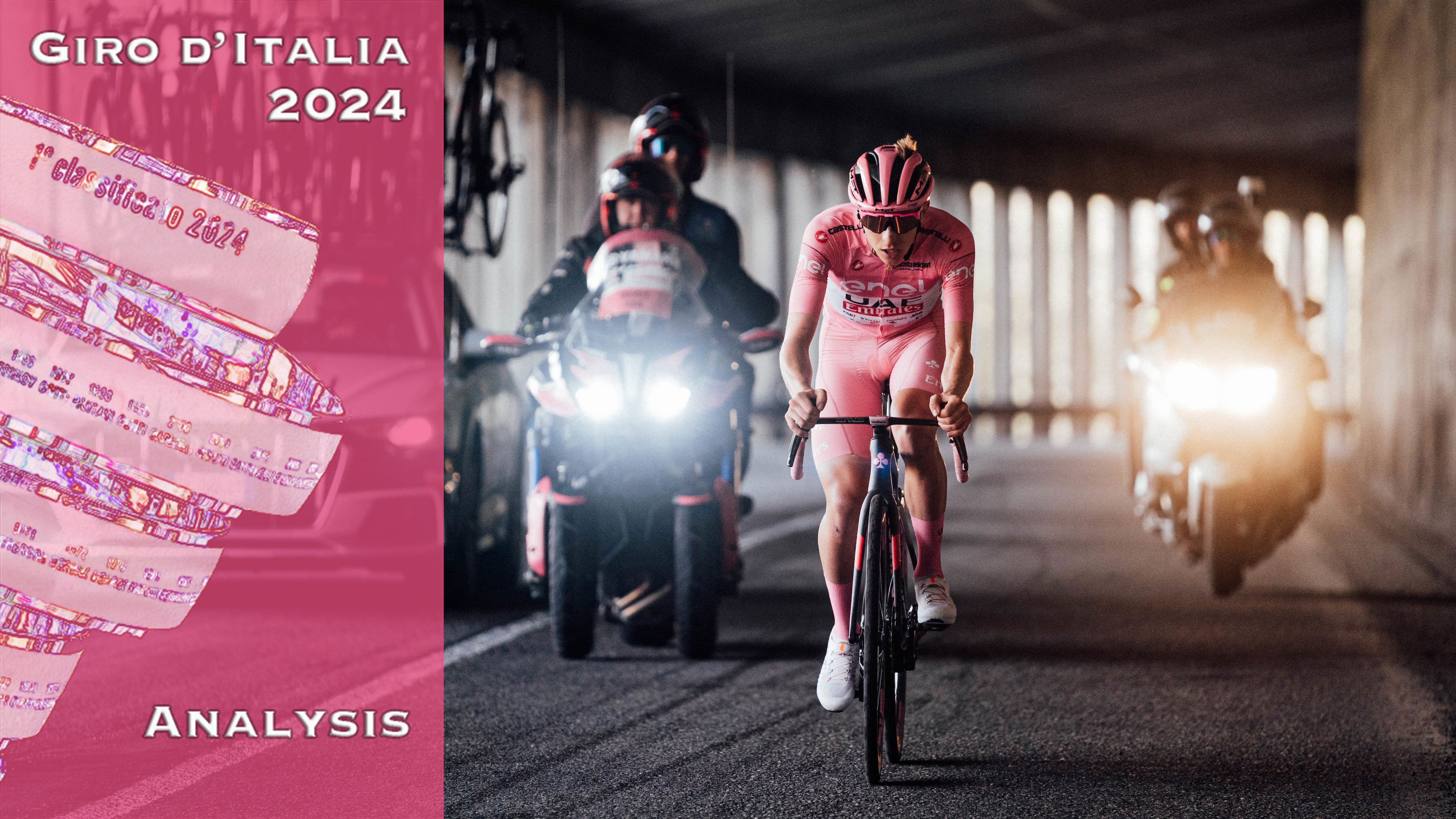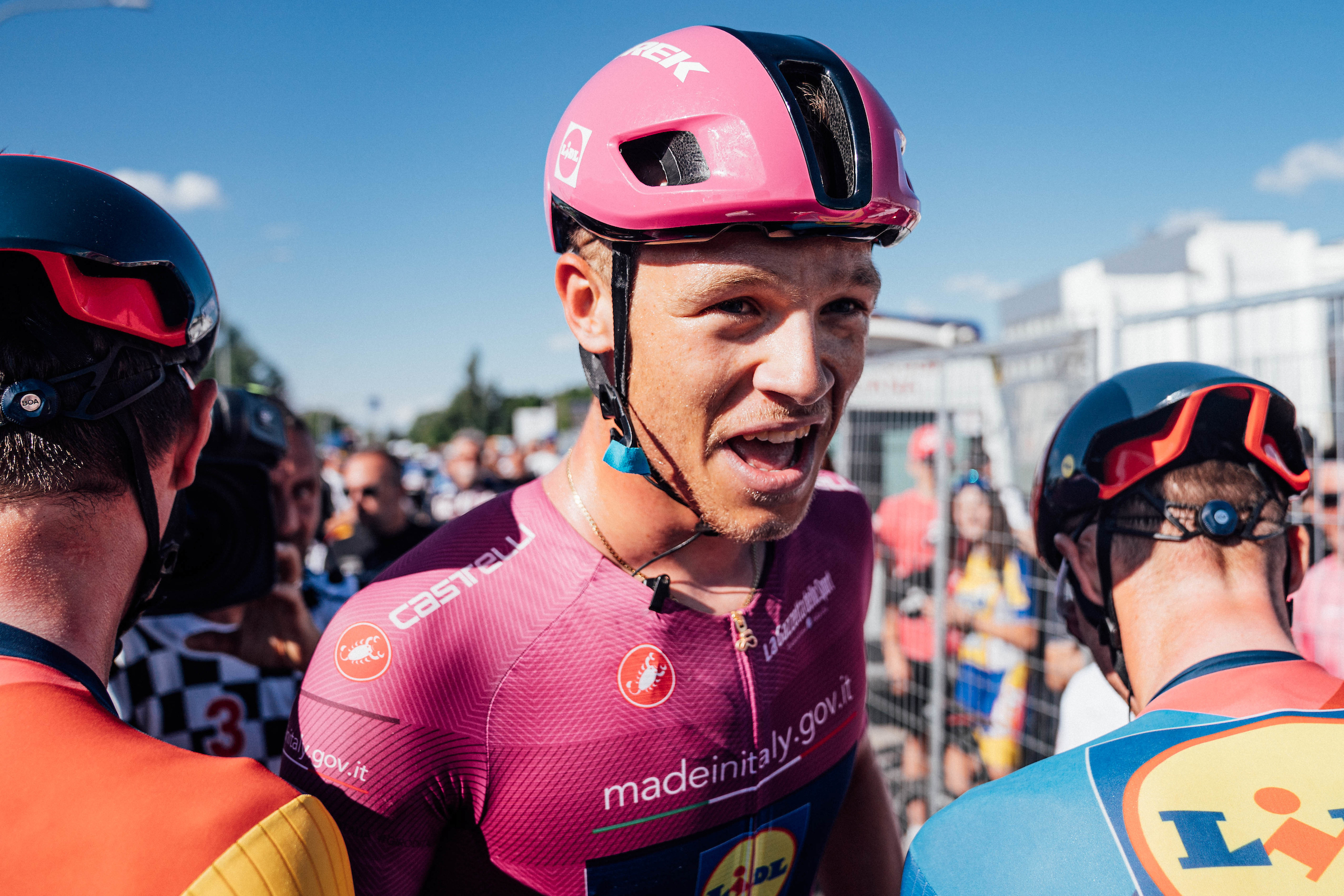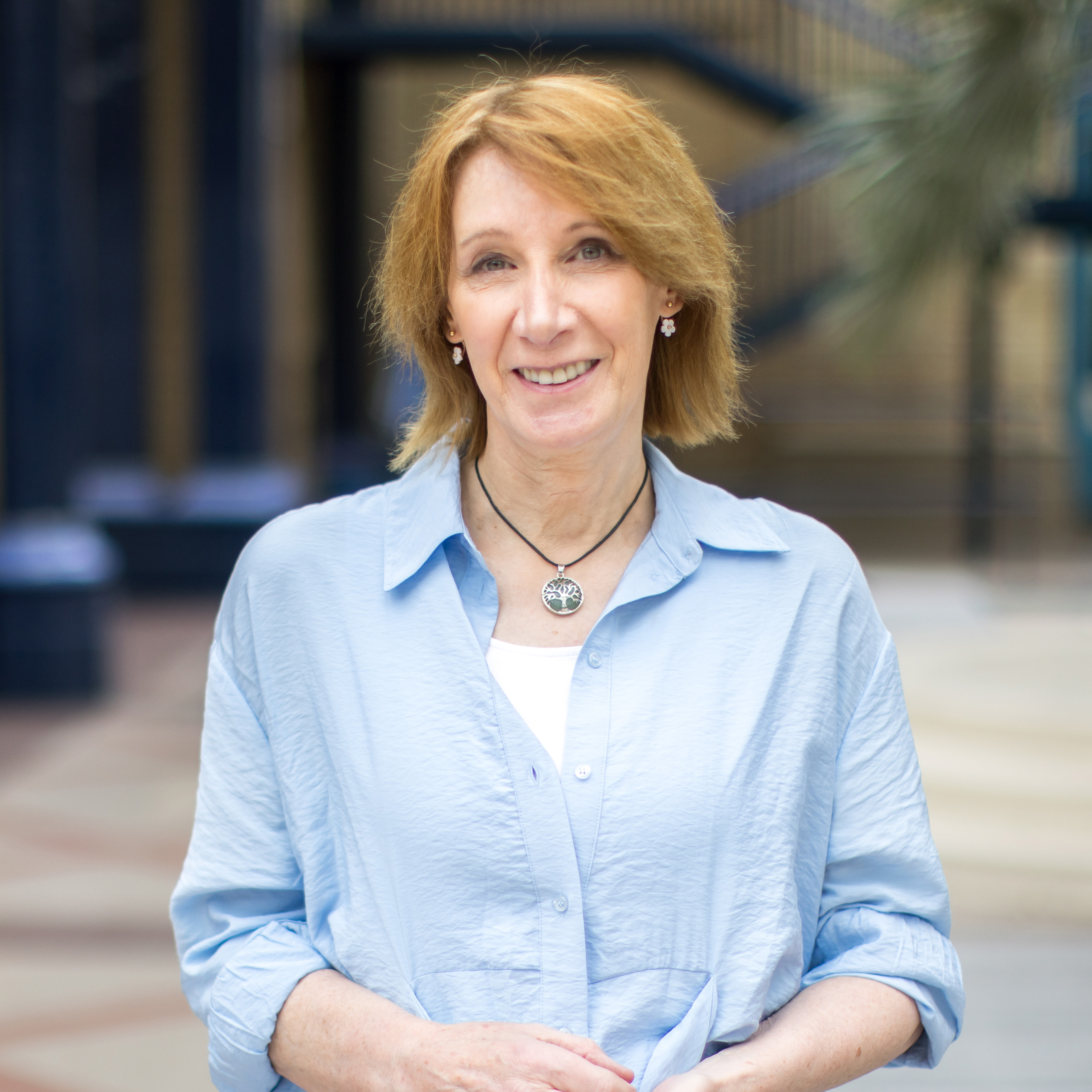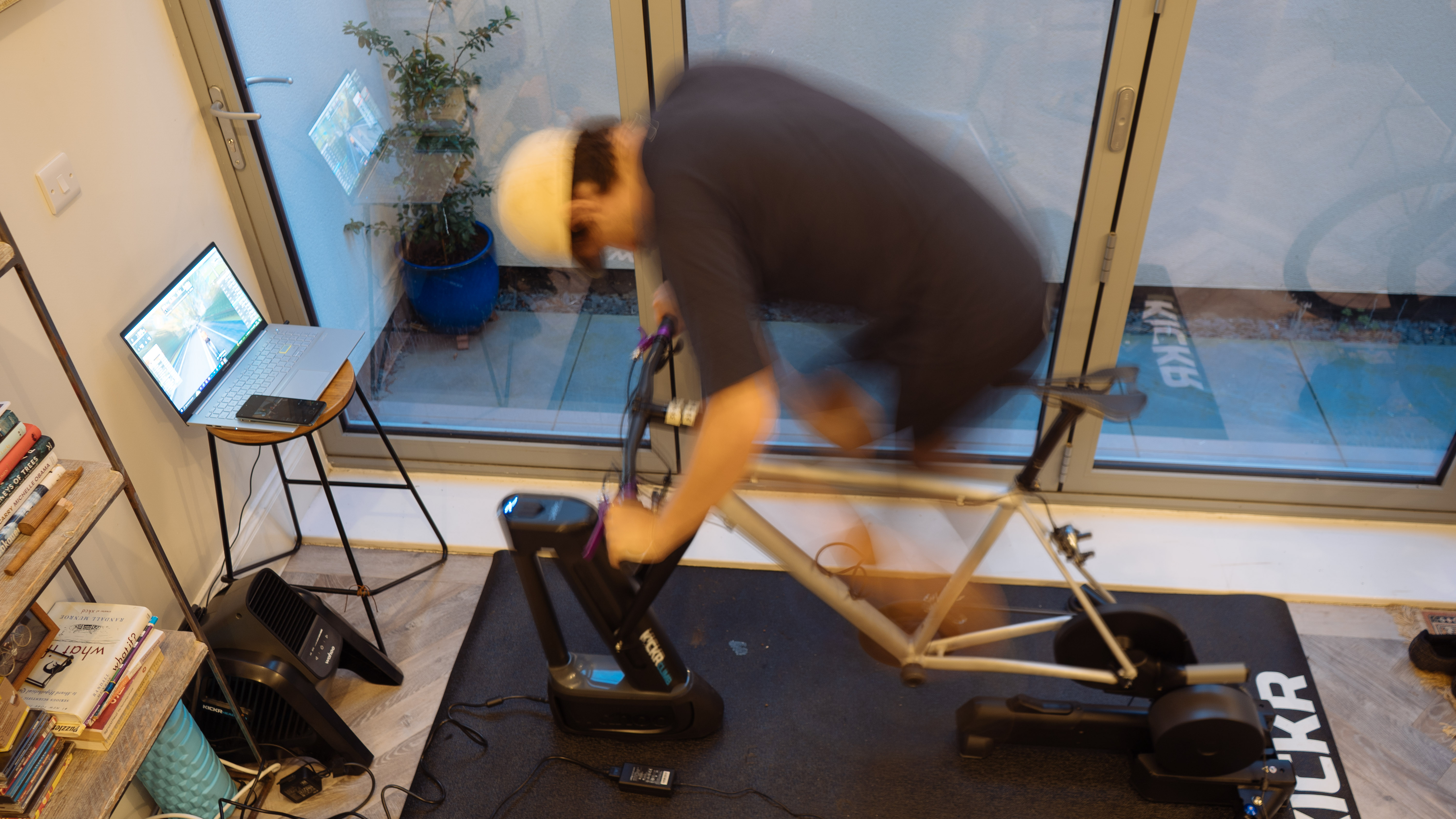Philippa York Analysis: Tadej Pogačar has made his point at the Giro d’Italia, now he can control rather than crush
Geraint Thomas, Daniel Martínez and the various running battles of the final week

Almost seven minutes, and if it had been a more selective week, then it’s quite likely Tadej Pogačar’s lead at the Giro d’Italia would have been more. However, I think that now even he will be satisfied that he can relax a little and watch what happens to those who are left fighting among themselves for the podium places.
That’s not to say he won’t grab another chance of a stage win if it comes along, but it’s most likely he’ll only really commit to another victory if it’s not too costly in terms of energy. He’s made his point that he’s a level above everyone when the road goes uphill, so now he and UAE Team Emirates can control instead of crushing the opposition.
Looking at Pogačar’s ride to Livigno, it was another display of power and tactical awareness. Once he was alone, he knew all cohesion in the chase would disappear, which was visibly apparent when Rafał Majka, who had been the pacesetter for the maglia rosa’s acceleration, came back to the other GC guys. Credit has to go to Dani Martínez, who tried to follow but Pogačar was never going to let that happen and the Bora rider wisely returned to the Thomas group. For the moment they aren’t climbing in the same league as the race leader.
It was reminiscent of stage 8 of the 2021 Tour de France when he attacked on the Col de Romme and then rode Col de la Colombière on the big ring. Back then, Richard Carapaz tried to follow, but he couldn’t sustain the pace and the GC group lost three minutes. Anyone present that day wasn’t surprised when the repeat performance came at Livigno.
By the way, the big ring climbing preference isn’t all showing off – it’s smoother and feels more efficient, probably due to less chain friction. It’s great when you can do it and, sadly for his rivals, Pogačar can demonstrate it on a regular basis.
The podium battle
The suspense is now all about who gets to accompany Pogačar on the podium in Rome and that is far from clear with what lies ahead. Six days of racing remain and four of them are mountainous. The other two are for the sprinters who will have survived with some faculties intact. Dani Martínez and Geraint Thomas seem to have a bit of margin over Ben O’Connor, but one below-average day and the Australian could be back in the game with the former Ineos teammates.
That’s the really interesting thing here, because they both know the other’s strength and weaknesses. Thomas will grind away on a bigger gear and then up the pace inside the last kilometre of a finish whereas Martínez will – and has to – attack from further out to gain back the seconds he lost in the time trial. Martínez could possibly rely on his superior sprint, but it’s a risky strategy that’s not guaranteed to yield the desired outcome. But there are still three mountaintop finishes, so depending on how the Bora man recovers, it could well come down to that scenario.
The latest race content, interviews, features, reviews and expert buying guides, direct to your inbox!
One problem the Colombian has is that he will most likely be isolated when the GC group starts fighting for their positions. The second problem is that Thymen Arensman will be there to aid Thomas if and when Martínez tries a longer-range attack. It means there’s a tactical dilemma. Any change relies on either Thomas or Martínez showing a dip in form, but, in truth, the forcing to make that happen could come from Ineos – Bora don’t have the resources to challenge them in that regard.
The other contests
There’s also the white jersey competition to consider between Arensman and Antonio Tiberi, so Ineos have to be careful with how much work they impose on the young Dutchman. Bahrain Victorious, like Bora, aren’t in a position to compete with the big teams, and thus their approach will likely be to put riders in the break and then use any opportunity that develops.
In the background of the GC scrapping are Romain Bardet, Filippo Zana, Jan Hirt and Einer Rubio, who can see that their top ten finish could become a top five if they sneak into a break or take advantage of a lull after a series of attacks in the finale. The first three will be on their own, but Rubio has a resplendent Nairo Quintana to possibly help.
Quintana now has a slim chance of the climbers’ jersey, so he has to infiltrate the early break and hope Simon Geschke doesn’t. Both Quintana and Geshke will be counting on that scenario on each mountain day in a bid to overcome the substantial lead Pogačar holds in that competition.

It’s just as well Jonathan Milan has a massive points lead, otherwise Pogačar could well look at the maglia ciclamino and consider the possibility of taking that too. I think it’s a done deal for Milan, though Lidl-Trek have to make sure the Italian fastman is coaxed through the four mountain stages to come.
What we’ve seen is that UAE Team Emirates and Ineos Grenadiers have the best squads for this GC contest, but only Ineos are interested in the team classification where they have a tiny lead over Decathlon AG2R La Mondiale. It will be interesting to see who finally comes out on top, as the riders they can rely on in the favourites group cancel each other out: Thomas and Arensman versus O’Connor and Valentin Paret-Peintre.
If the French squad want to claim the prize, then they’ll have to commit to only using Paret-Peintre deep into each finale rather than sending him up the road early. The differences between those four shouldn’t be that big and therefore the decisive rider is going to be the third man on each mountainous day.
It would probably have been Magnus Sheffield for Ineos and the classification would be more clear cut, but the American’s fall during the time trial has put a dampener on that scenario. He was going really well and now that crash has changed the tactical options for the team prize and, in a more limited way, also the GC.
On the flat stages in the next week, UAE and Ineos can sit back and relax somewhat as the sprint teams will have to control the race, but it will be interesting to see who is allowed to go in the breakaway on the other days.
There’ll be a mix of riders who are looking only at the stage, Julian Alaphilippe for example, then there’s the climbers’ jersey, which is still a possibility, and the team prize. Decathlon need to cover that and then so do Ineos, but always with an eye on their GC position. The man marking will have to be decided carefully in the briefing each day. By the third week, everyone is tired and designating roles to riders comes down to fatigue, form and how much fight they have left.
Pogačar might be impervious to the squabbling that happens, but everyone else still has suffering to contemplate.
Philippa York is a long-standing Cyclingnews contributor, providing expert racing analysis. As one of the early British racers to take the plunge and relocate to France with the famed ACBB club in the 1980's, she was the inspiration for a generation of racing cyclists – and cycling fans – from the UK.
The Glaswegian gained a contract with Peugeot in 1980, making her Tour de France debut in 1983 and taking a solo win in Bagnères-de-Luchon in the Pyrenees, the mountain range which would prove a happy hunting ground throughout her Tour career.
The following year's race would prove to be one of her finest seasons, becoming the first rider from the UK to win the polka dot jersey at the Tour, whilst also becoming Britain's highest-ever placed GC finisher with 4th spot.
She finished runner-up at the Vuelta a España in 1985 and 1986, to Pedro Delgado and Álvaro Pino respectively, and at the Giro d'Italia in 1987. Stage race victories include the Volta a Catalunya (1985), Tour of Britain (1989) and Critérium du Dauphiné Libéré (1990). York retired from professional cycling as reigning British champion following the collapse of Le Groupement in 1995.

